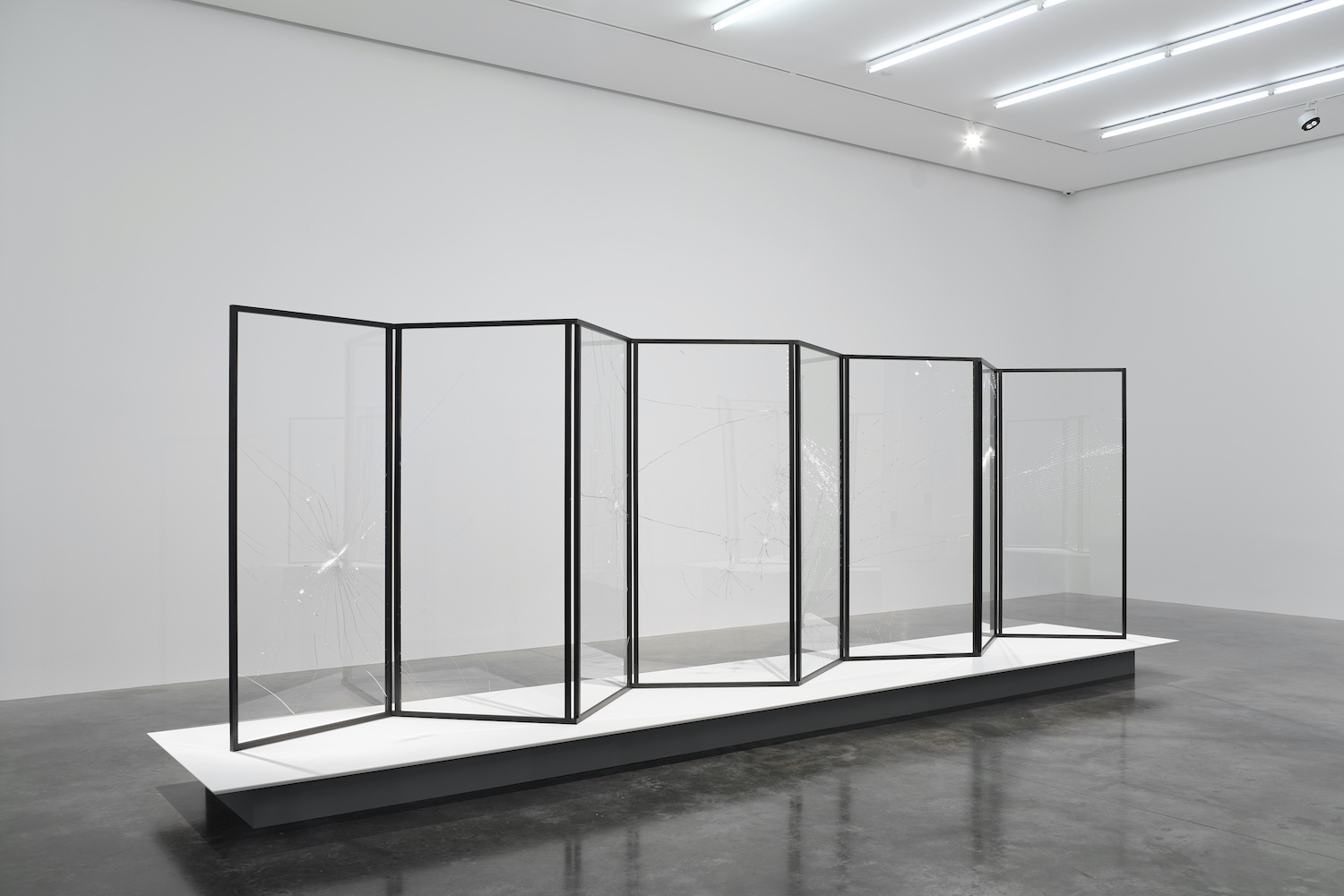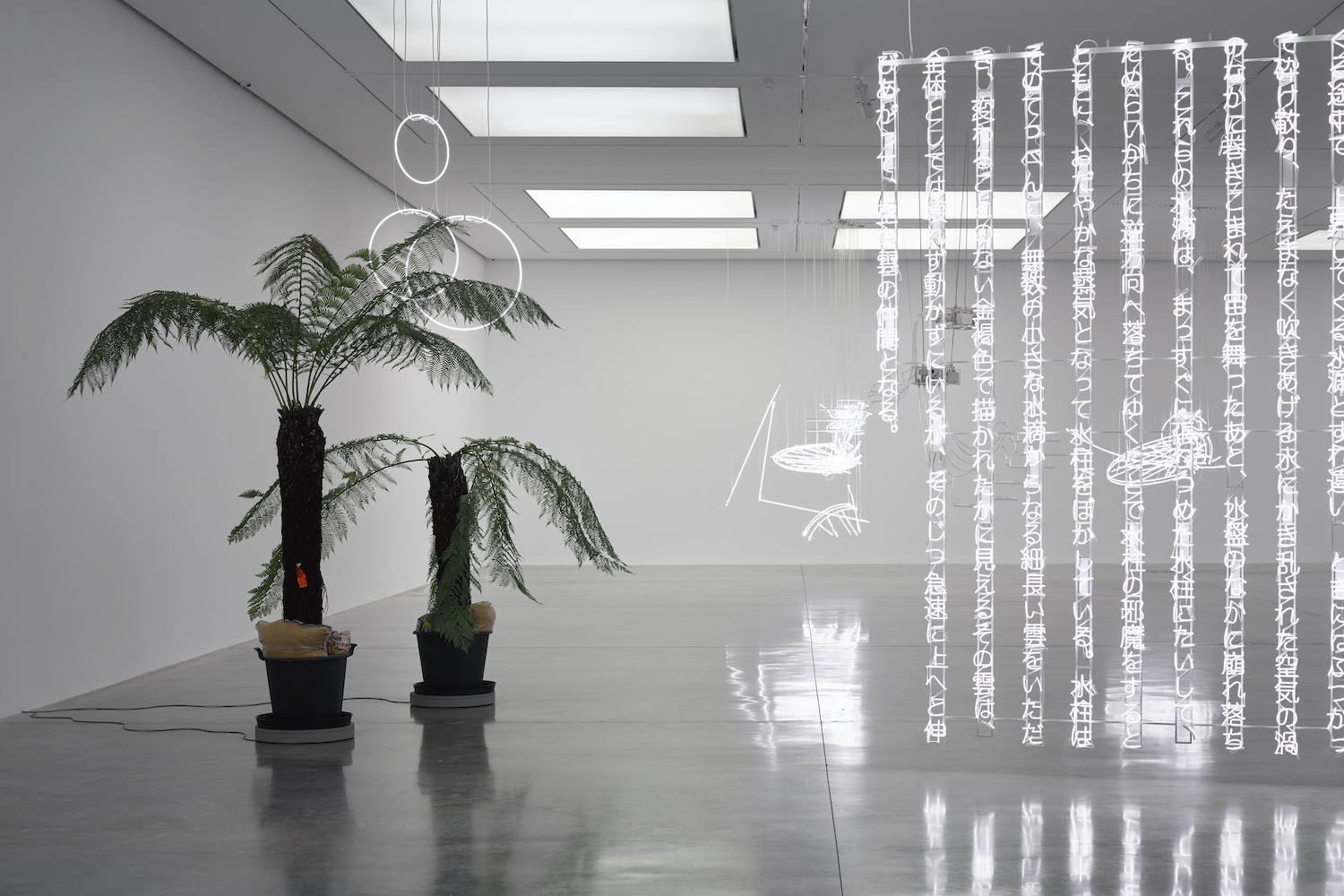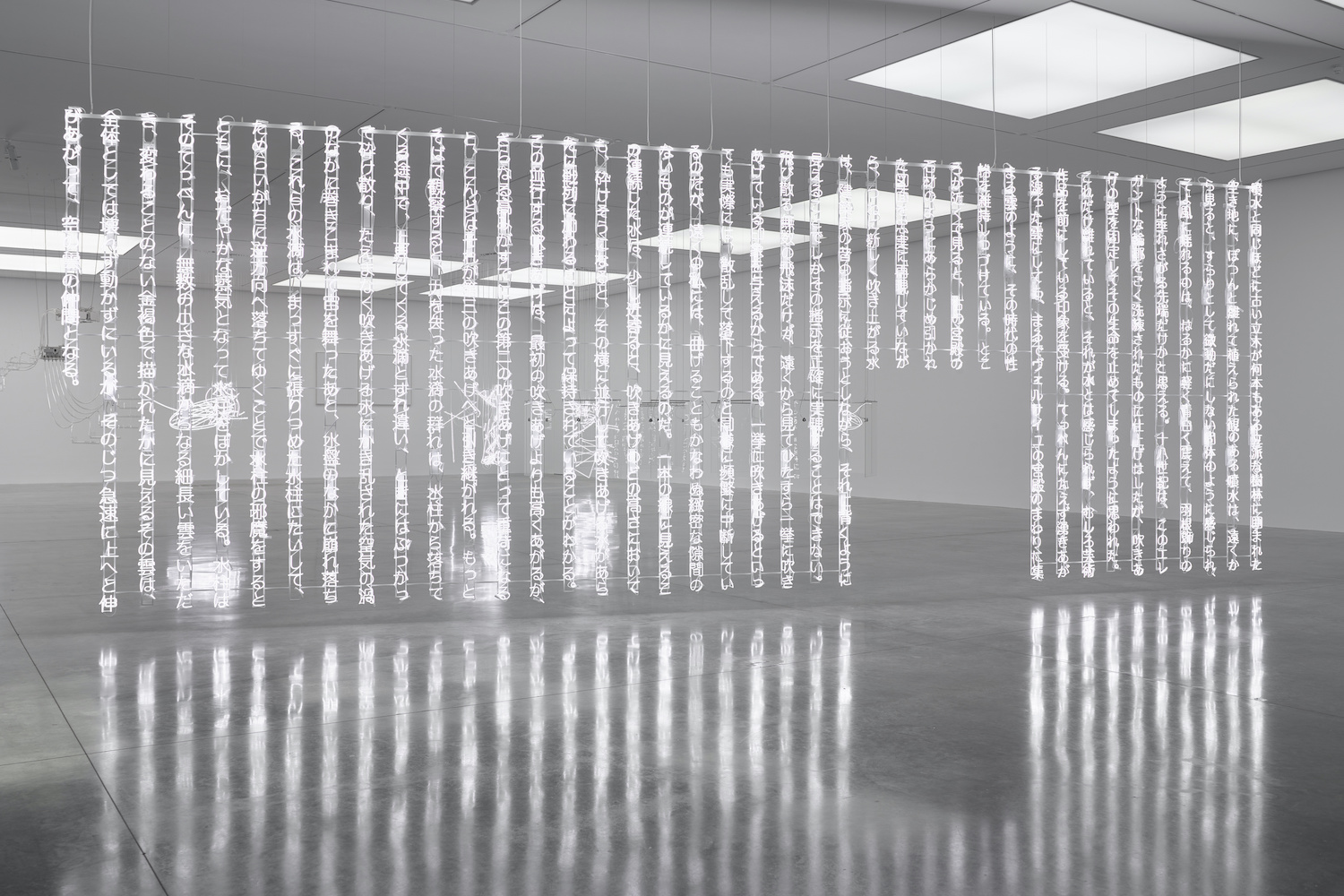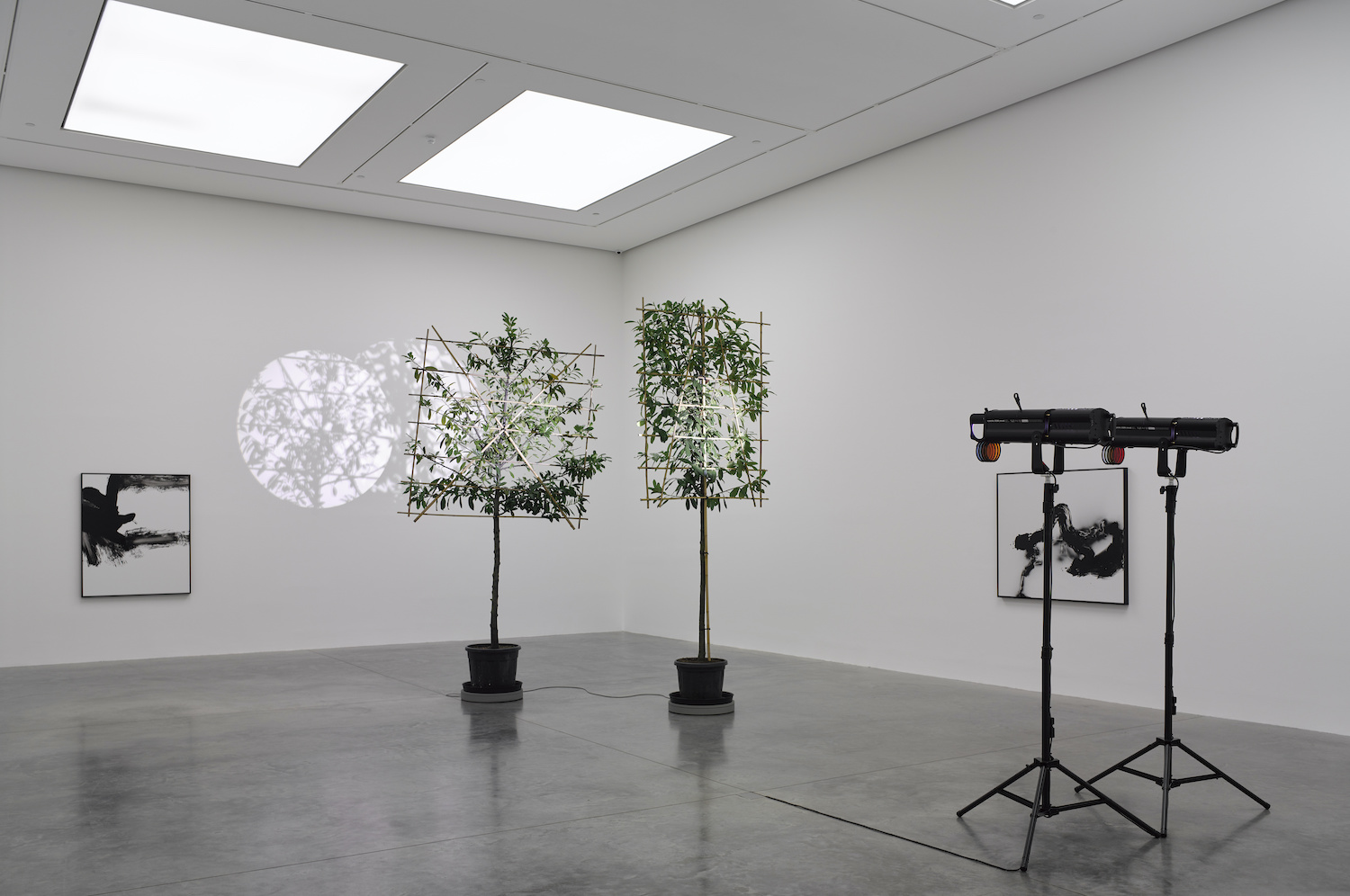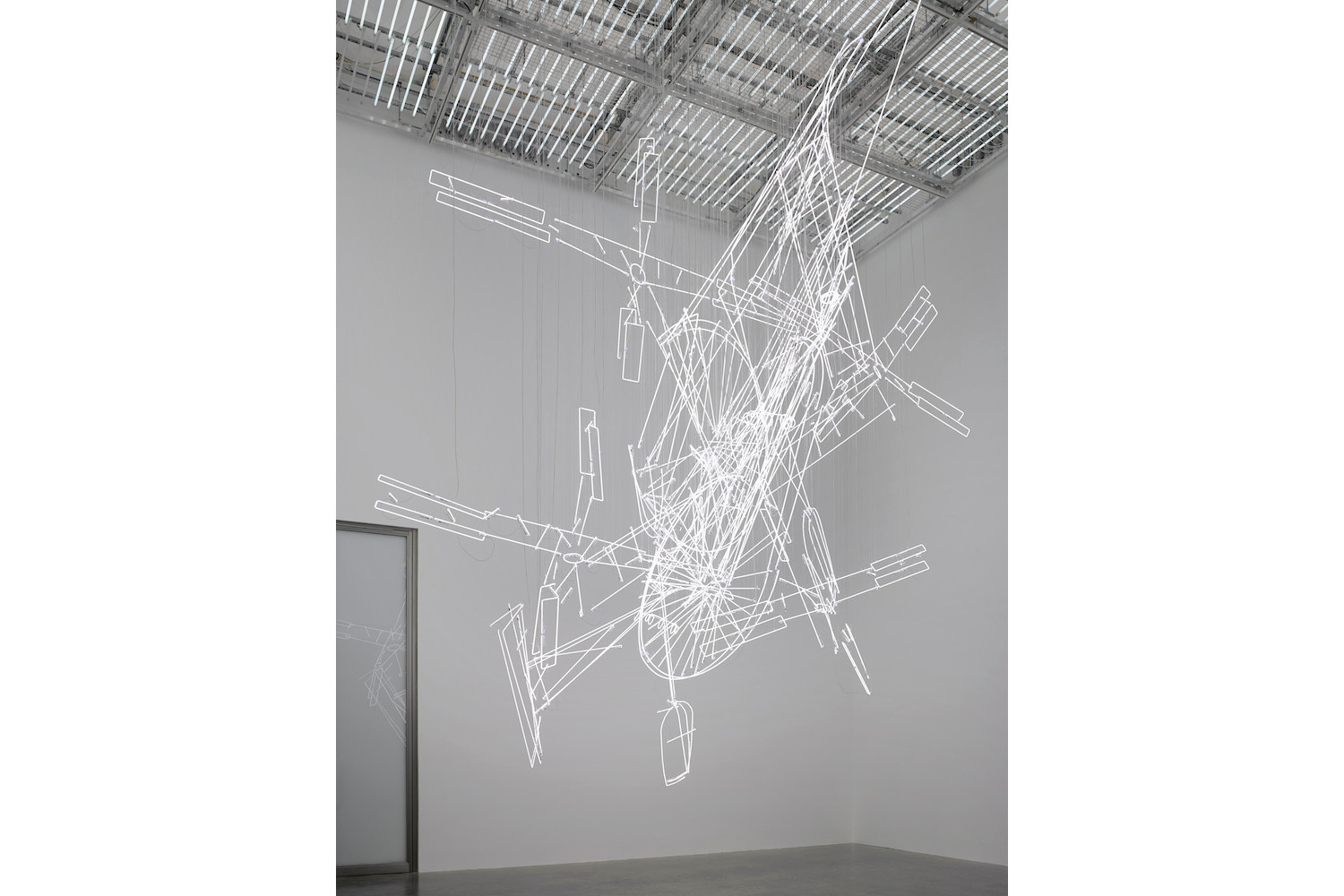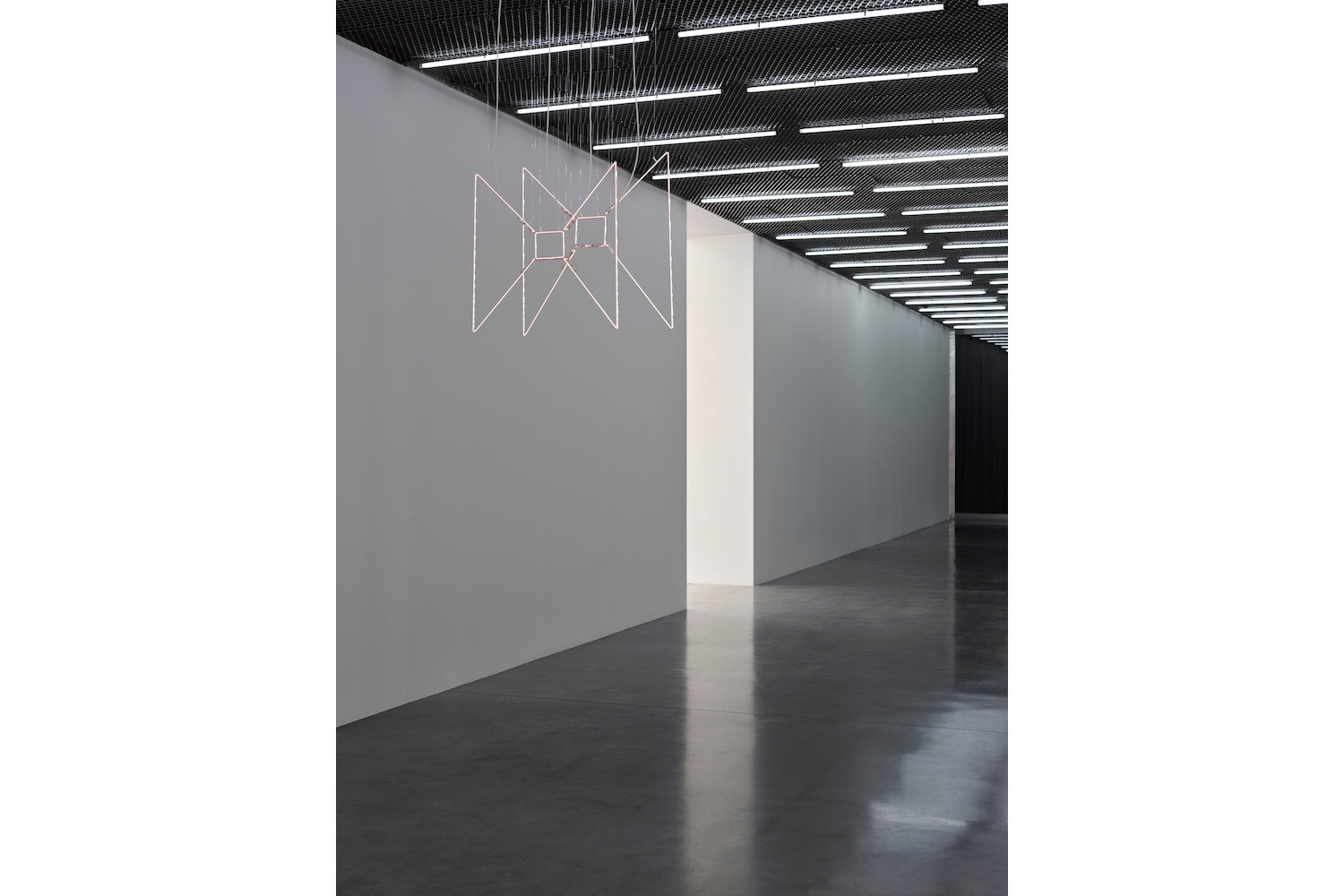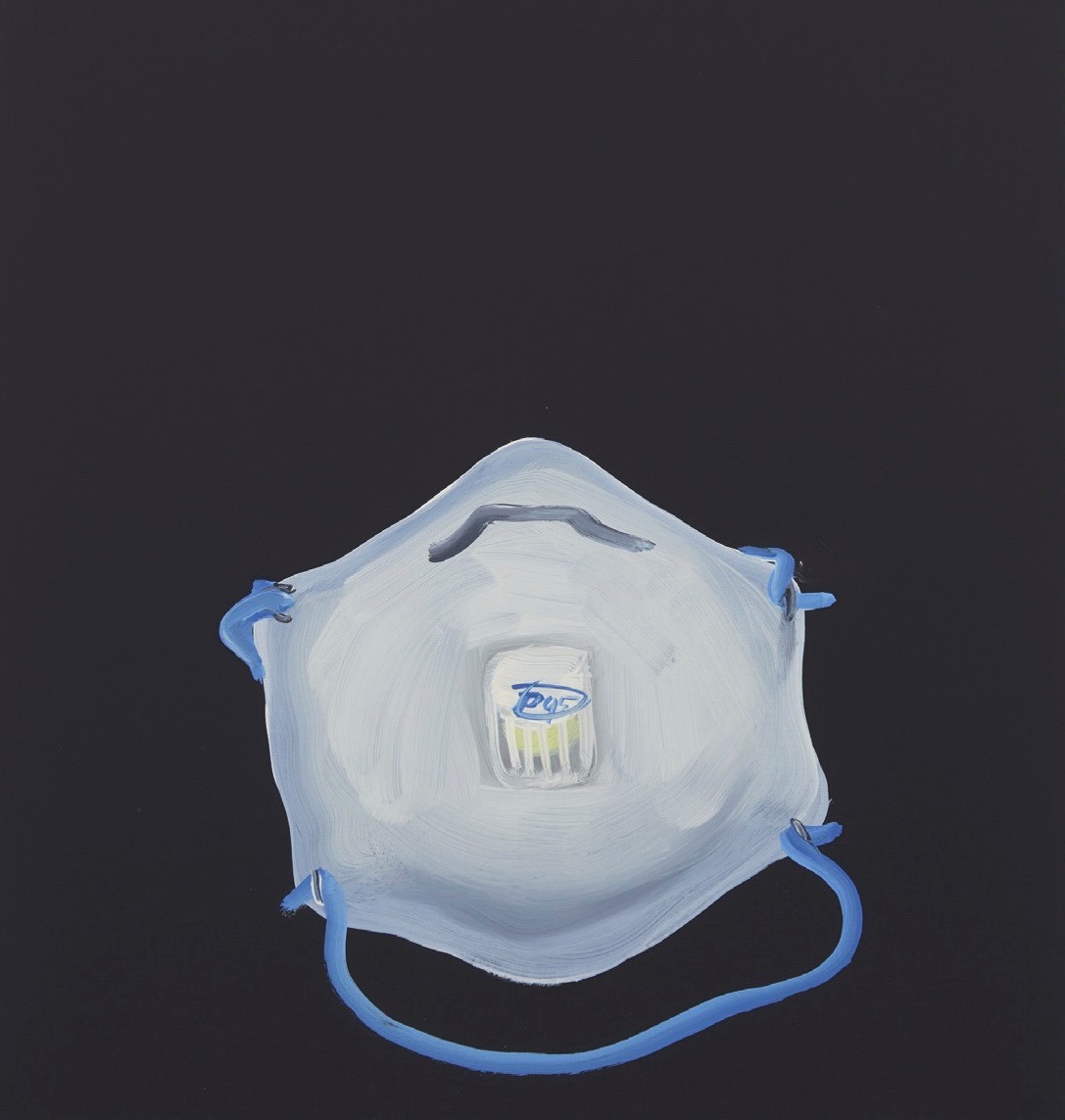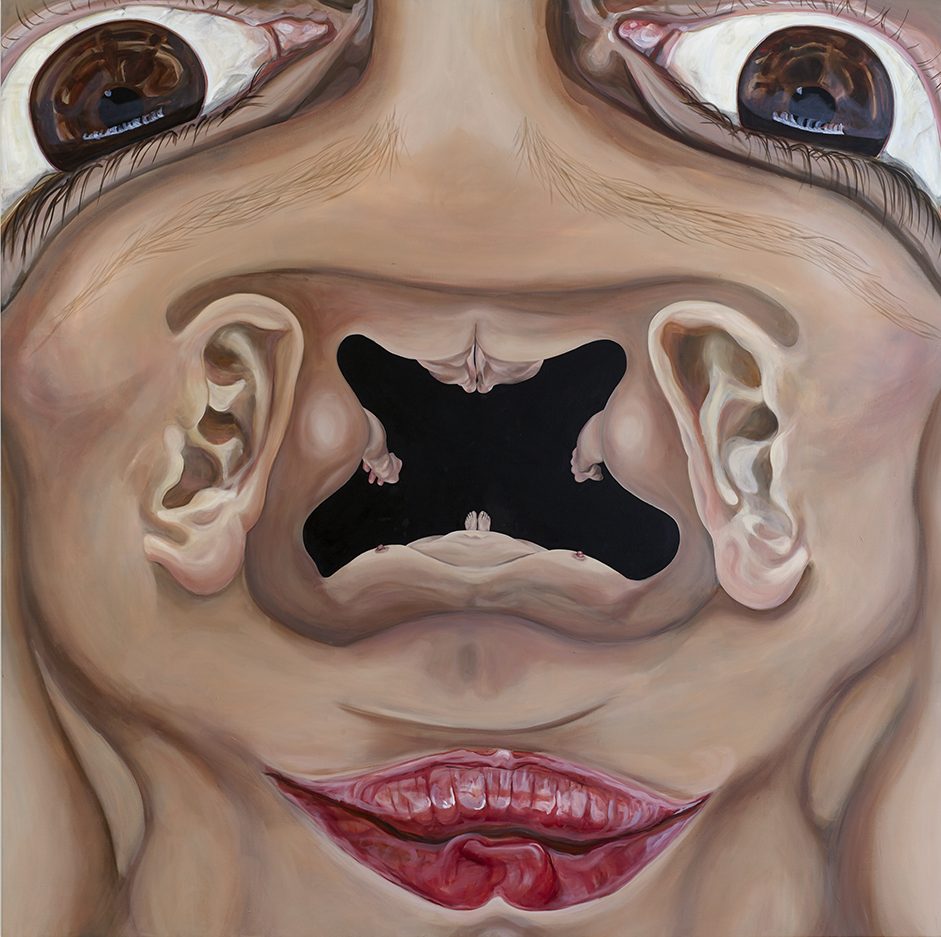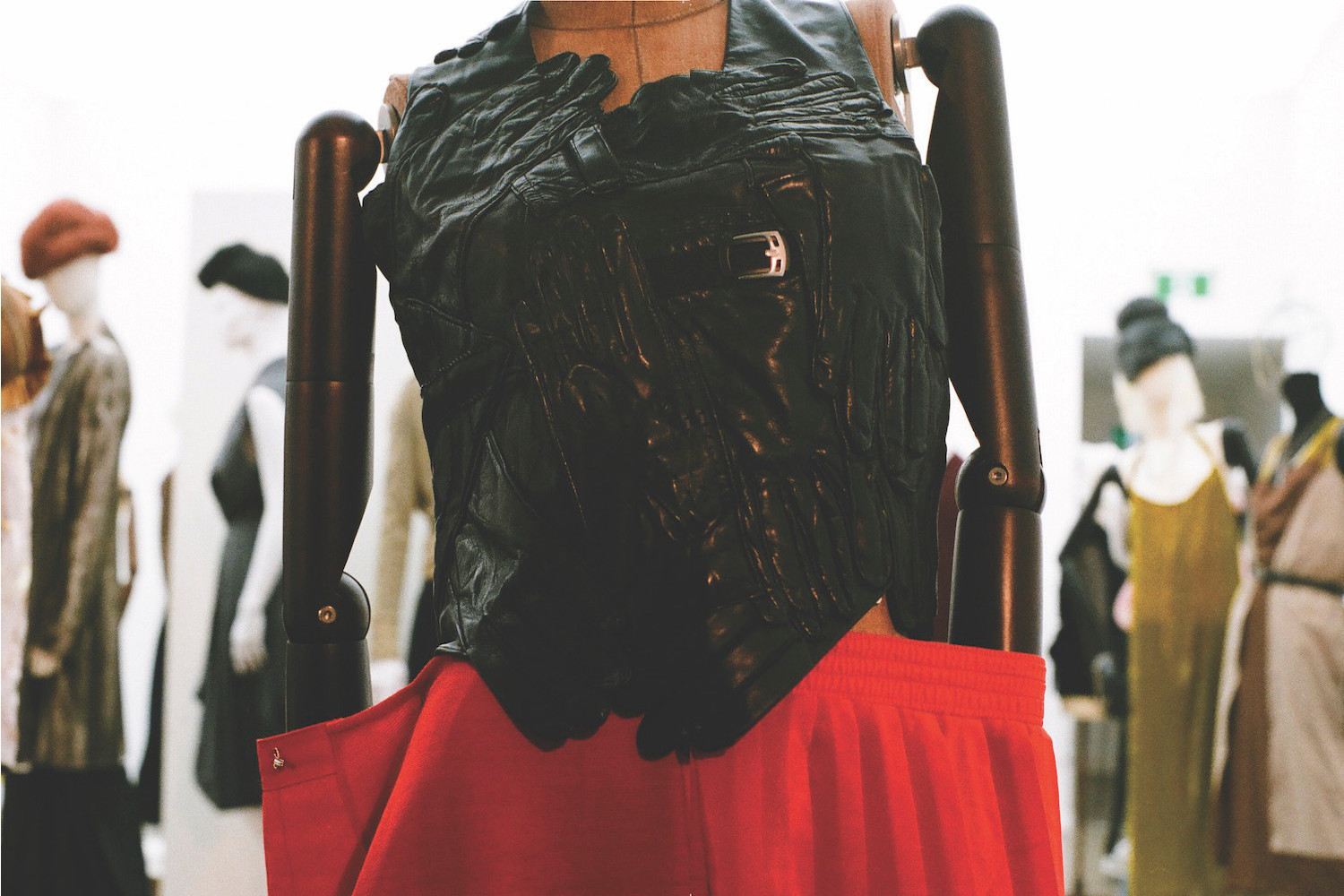If the stark, ascetic coda of Cerith Wyn Evans’s sculptures disintegrates under anything it is the sensuality of optics. Diluting the scopic regimes that codify cinematic aesthetics and experience, Evans interlaces scientific, technical, and conceptual art precedents to calibrate an optics whose minimalism belies a sub-structure of translation, nonlinear linguistics, and an appeal for transcendence.
The trickling center of “No realm of thought … No field of vision” is Charles Kenneth Scott Moncrieff’s translation (updated by D. J. Enright in 1992) of an excerpt from Marcel Proust’s “Sodom and Gomorrah” (1921/1922), the fourth volume of À la recherche du temps perdu. The excerpt details the movement of water through an eighteenth-century fountain reminiscent of a representation by Hubert Robert. Proust’s scrutiny of the water’s engineered yet ultimately capricious flow buckles under the pressure of what such scrutiny yields: erotics. It is tenderly kept at bay, slips in by chance.
Proust’s description reverberates between continuity — established by distance, making the fountain an image — and intimacy, which renders all its accidental, sensual discrepancy. Kazuyoshi Yoshikawa translated this extract into Japanese, which Evans formatted into one neon curtain, its vertical rows of kanji characters suspended and fitted with a walkthrough aperture. The work resides in a room full of hanging deconstructed neon clusters, four of which reference collapsed, disarticulated versions of a photograph Evans took of Duchamp’s Bicycle Wheel (1913). The alchemy of Duchamp, I’d like to think, is more a footnote, despite his lasting and affecting influence on Evans. A similar superfluity comes through in monochromatic paintings, where sweeping black gloss capitalizes on the gesture, esteemed as Event. More interesting are the pleached trees rotating on turntables which, spotlit, express their overlapped dappling of light as renditions of proto-cinema.
While previous work has interrogated the acoustics of stars and the paraphernalia of the cosmos, here a set of eleven crystal flutes connect to undulating tubes controlled by two breathing units whose soothing, melodious composition is pure pulse, without vessel. Much of Evans’s work is this realization of negation; whether auditory or visual it actualizes the tension itself that sets the perceptible against the invisible. To continue with the minor or non-event, one could look to 9 x 9 x 9, fig. (0) (2020), a splintering neon sculpture rendered in reference to drawings of the first helicopter designed in 1907 by Paul Cornu. As content, the subject of propositional flight is a strange rejoinder to Evans’s preoccupation with transcendence through attempts: drafts, flickers, and interstices make-up his lexicon — literalized in his framed works of shattered glass, of contained rupture.
Legacy, like a center, cannot always hold flux or convolution. The perforations of Duchampian odes in “No realm of thought… No field of vision” stretch my desire for the inverse — a glance away from endurance. To come back to the fountain, the extract ends on eruptive rebellion: “At times indeed a single disobedient jet swerved and, had they not kept a respectful distance, would have drenched to their skins the incautious crowd of viewers.” Think of the pleasure in that splash.

